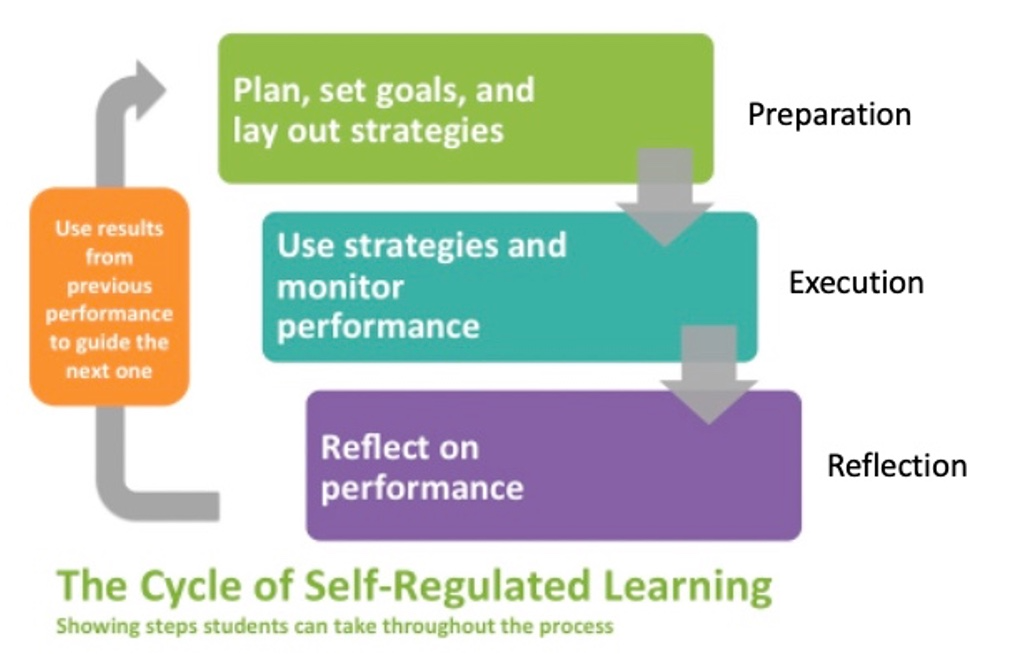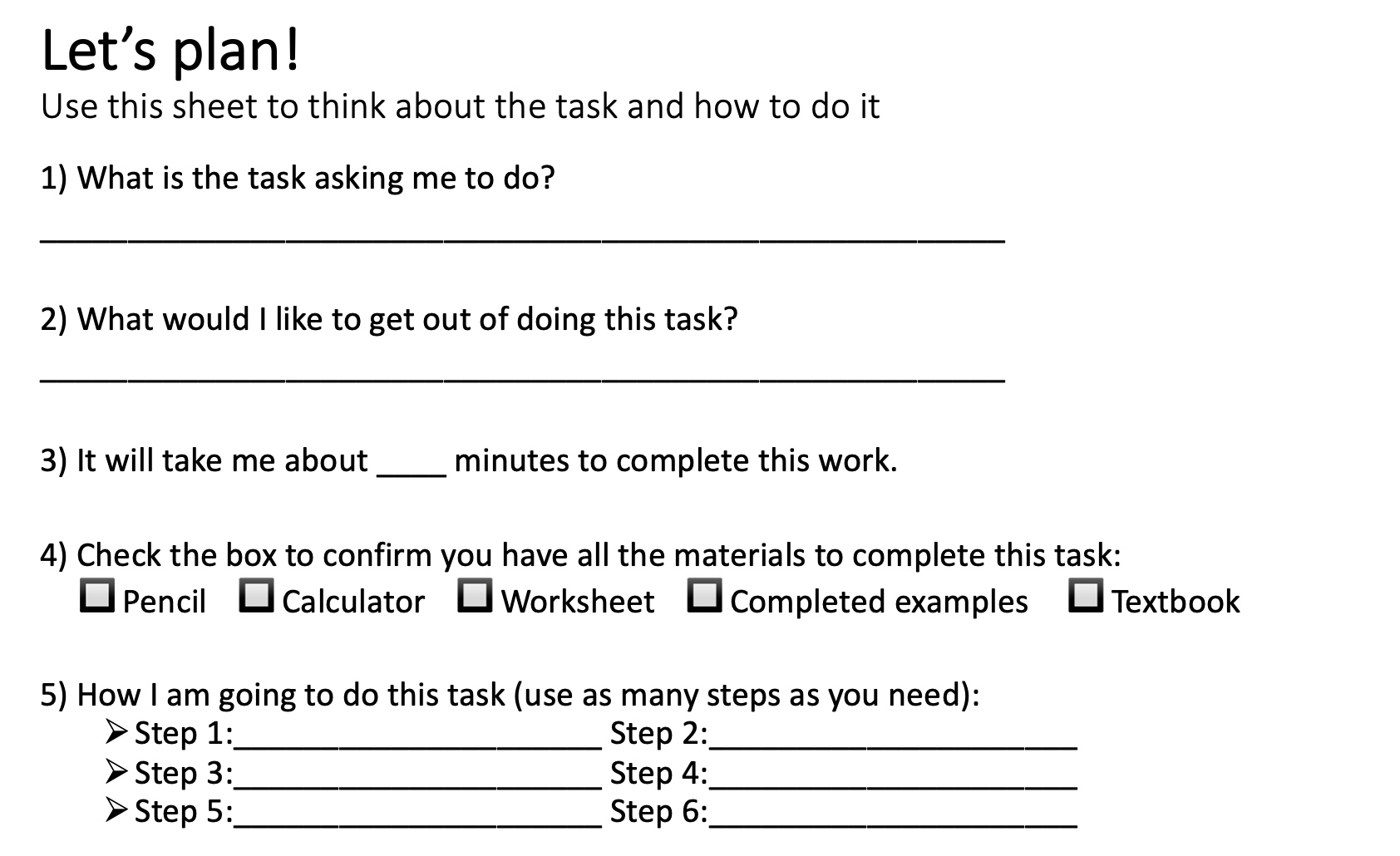by Sarah Hampton and Dr. Dalila Dragnić-Cindrić
How many of us want our students to be highly motivated learners? Proactive? Goal-directed? Strategic? Perseverant? Adaptive? We’ve heard teachers across subjects and grade bands say that these are difference-making characteristics that students need to be successful in and out of the classroom. In educational research terms, students who demonstrate these qualities are skilled at regulating their learning. Researchers have dedicated significant efforts to understanding self-regulated learning skills and the underlying processes. In a series of three blog posts, we take a closer look at regulation of learning, why it matters to students and teachers, and how educators might foster it in classroom settings.
As Timothy Cleary describes in The Self-Regulated Learning Guide (2018), self-regulated learners “want to perform well on some activity” and “purposefully and strategically figure out ways to achieve their goals…despite experiencing challenges, barriers, or struggles, [they] continuously find a way to learn” (pp. 9-10). Interestingly, they do this by repeating three fairly simple phases (Figure 1):
- Before the Learning (Preparation Phase)–self-motivating and figuring out how to approach the task;
- During the Learning (Execution Phase)–maintaining motivation, using strategies to complete the task, and self-monitoring thinking and actions during learning;
- After the Learning (Reflection Phase)–determining how well the selected strategies helped accomplish the task and deciding how to improve next time.

Figure 1. Phases of self-regulated learning.
Note: This figure shows phases of self-regulated learning and steps students can take throughout this cyclical process. Adapted from the original figure The Cycle of Self-Regulated Learning by Karen Kirk from Develop Self-Regulated Learners: Choosing and Using the Best Strategies for the Task. Published under the Creative Commons license.
Self-regulated learning is cyclical and its phases are iterative and loosely sequenced; students might move from one phase to the next or revisit previous phases as needed. Thinking about strategies involves thinking about learning strategies (e.g., ignoring distractions, re-reading task instructions) as well as best content area strategies to use in a given task.
But what do we do when our students aren’t particularly skilled in regulating their learning? Can regulation be learned? Can regulation be taught? Should it be taught?
Some learners figure out how to regulate their learning on their own and then go on to do it automatically without much thought. That can lead us to believe that some people just get it and some people don’t. However, that kind of fixed mindset thinking isn’t accurate. Regulation of learning can be learned and strengthened when people become aware of the principles and processes behind it and consciously reflect on how to do it better. In fact, when learners realize that the strategies they select are directly linked to how successful they are with tasks, they experience greater self-efficacy, motivation, and success on future tasks (Greene, 2018).
Likewise, regulation of learning can be taught when we explicitly talk about it with our students, model it for them, and prompt them to engage in it before, during, and after learning activities in our classes. For example, a mathematics teacher might ask her students to fill out a task planning sheet before starting a task (Figure 2) to help them prepare for learning.

Figure 2. Student task planning sheet by D. Dragnić-Cindrić and S. Hampton
The purpose of engaging students in task planning is to get them to think about the task and their own goals for it, which might differ from the teacher’s goals. It connects the doing of the task to the time the teacher allotted for it and the materials students will need to use to get it done. Lastly, it leads the students to think about and plan the steps needed to complete the task beforehand. Of course, this plan is a starting point and should remain flexible as students work through the task. The idea behind scaffolds like this planning sheet is that they help students internalize and learn how to engage in self-regulated learning, and over time, begin to do it on their own in other classes.
So regulation can be learned and taught, but should it? In our conversations on this topic, we relied on our combined expertise, Sarah, as a practitioner and teacher coach with 15 years of experience, and Dalila, as a learning scientist, who studies individual and group regulation of learning. During our conversation, we discussed current regulation of learning literature, Dalila’s own research findings, and Sarah’s deep knowledge of classroom contexts. We concluded that teaching regulation is so important because, immediately, it helps students see what they do in the classroom as something they do for themselves vs. something they do for the teacher, parents, school, etc., and, ultimately, it prepares students for success in any career path. The bottom line is that regulation empowers students and prepares them for life.
Everyone is going to encounter a difficult moment, an exceptional challenge, and regulation is critical in that moment. Regulation of learning strategies are for everyone. Even if you don’t need them today, I promise you, a day will come when you’ll need them. – Dalila Dragnić-Cindrić
In addition to the benefits for students, an upfront investment in teaching regulation of learning returns dividends for teachers, too. Imagine having a classroom full of students who are active and confident self-regulated learners rather than passive recipients of knowledge. Some of the time you currently spend motivating learners and managing your classroom could be repurposed for more personalized instruction as students begin diagnosing their own learning barriers and requesting specific kinds of help. Teaching regulation of learning alleviates teachers of the sole responsibility for ensuring students’ progress, while equipping students to assume more ownership of their learning success.
Research supports what we intuitively know–helping students learn to be highly motivated, proactive, goal-directed, strategic, perseverant, adaptive learners is a game changer for them, and we can accomplish it by explicitly teaching and modeling regulation of learning skills. Because the benefits transcend subject areas and career paths, we would argue that teaching regulation is even more important than teaching subject specific content. Thankfully, teaching content and regulation of learning together is the best way to teach them both.
In the coming blog posts within this series, we’ll explore some barriers and potential solutions for teaching regulation of learning in our classrooms. We’ll also discuss regulation of learning in collaborative groups (i.e., social regulation of learning) and hear more from Dalila about her research on this topic and from Sarah about her experiences with managing collaborative groups in her math and science classrooms. Together we will offer insights and recommendations for educators.
Do you think it’s important to explicitly teach regulation of learning? Why or why not? If you’re already teaching it, let us know your favorite strategies by tweeting @EducatorCIRCLS!
Educator CIRCLS posts are licensed under a Creative Commons Attribution 4.0 International License. If you use content from this site, please cite the post and consider adding: “Used under a Creative Commons Attribution 4.0 International License (http://creativecommons.org/licenses/by/4.0/).”
Suggested citation format: [Authors] ([Year]). [Title]. Educator CIRCLS Blog. Retrieved from [URL]
Resources
Cleary, T. J. (2018). The self-regulated learning guide: Teaching students to think in the language of strategies. Routledge. https://doi.org/10.4324/9781315693378
Greene, J. A. (2018). Self-regulation in education. Routledge. https://doi.org/10.4324/9781315537450
Kirk, K. (n.d.) The cycle of self-regulated learning. [Figure]. The Supporting and Advancing Geoscience Education at Two-Year Colleges (SAGE 2YC) project website. Retrieved July 13, 2023, from https://serc.carleton.edu/sage2yc/self_regulated/index.html
How to cite this work
CIRCL Educator posts are licensed under a Creative Commons Attribution 4.0 International License. If you use content from this site, please cite the post and consider adding: "Used under a Creative Commons Attribution 4.0 International License (http://creativecommons.org/licenses/by/4.0/)."
Suggested citation format: [Authors] ([Year]). [Title]. CIRCLEducators Blog. Retrieved from [URL]
